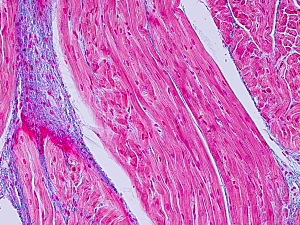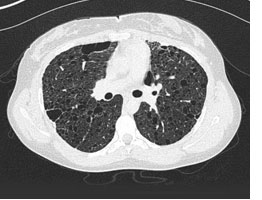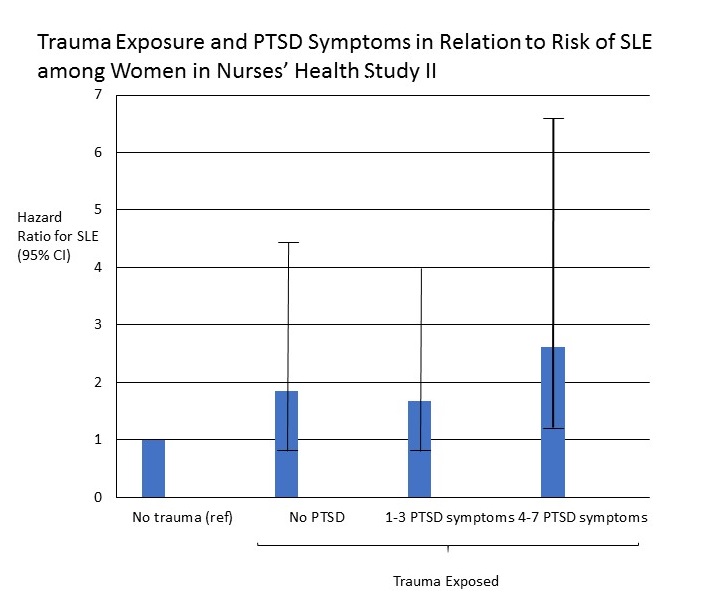 Andrea L. Roberts, PhD, Susan Malspeis, MS, Laura D. Kubzansky, PhD, Candace H. Feldman, MD, Shun-Chiao Chang, ScD, Karestan C. Koenen, PhD, Karen H. Costenbader, MD, MPH Arthritis & Rheumatology, 2017;69(11):2162-2169.
Andrea L. Roberts, PhD, Susan Malspeis, MS, Laura D. Kubzansky, PhD, Candace H. Feldman, MD, Shun-Chiao Chang, ScD, Karestan C. Koenen, PhD, Karen H. Costenbader, MD, MPH Arthritis & Rheumatology, 2017;69(11):2162-2169.
Systemic lupus erythematosus (SLE) is an enigmatic inflammatory autoimmune disease. A widely-accepted etiologic model for SLE is that environmental exposures “trigger” the disease in genetically-predisposed individuals. The epidemiology of SLE – 80-90% of cases occur in women, and disease severity is much greater in African-American and non-white populations – points to the obvious role of genetics, and genome-wide association studies have identified many genetic factors associated with SLE susceptibility. Meanwhile, there is a growing list of exposures which have also been associated with SLE risk in epidemiologic studies, which include current cigarette smoking, crystalline silica, pesticides, and oral contraceptives and postmenopausal hormones among women. Models for how these and other environmental exposures may contribute to autoimmune disease pathogenesis include elevating concentrations of systemic inflammatory cytokines, increasing oxidative stress, and impairing T-cell function.
Read More
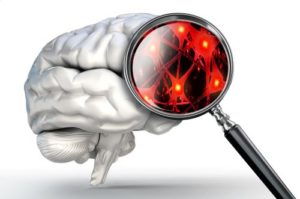
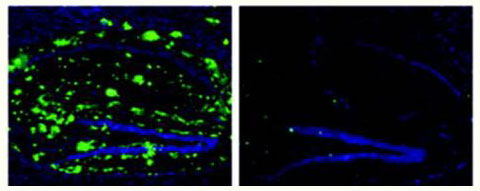
 Could understanding a patient’s personal network of friends and family provide important clues to health and illness, and even guide care? Neurologist
Could understanding a patient’s personal network of friends and family provide important clues to health and illness, and even guide care? Neurologist  Andrea L. Roberts, PhD, Susan Malspeis, MS, Laura D. Kubzansky, PhD, Candace H. Feldman, MD, Shun-Chiao Chang, ScD, Karestan C. Koenen, PhD, Karen H. Costenbader, MD, MPH Arthritis & Rheumatology, 2017;69(11):2162-2169.
Andrea L. Roberts, PhD, Susan Malspeis, MS, Laura D. Kubzansky, PhD, Candace H. Feldman, MD, Shun-Chiao Chang, ScD, Karestan C. Koenen, PhD, Karen H. Costenbader, MD, MPH Arthritis & Rheumatology, 2017;69(11):2162-2169.



